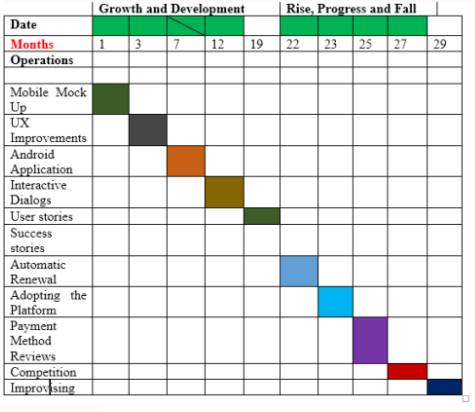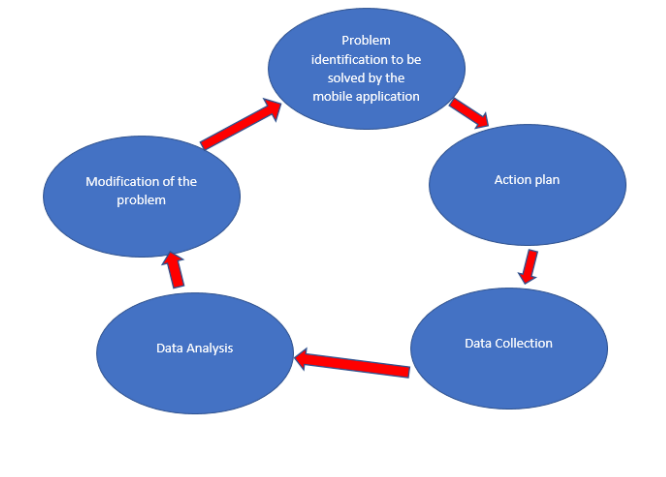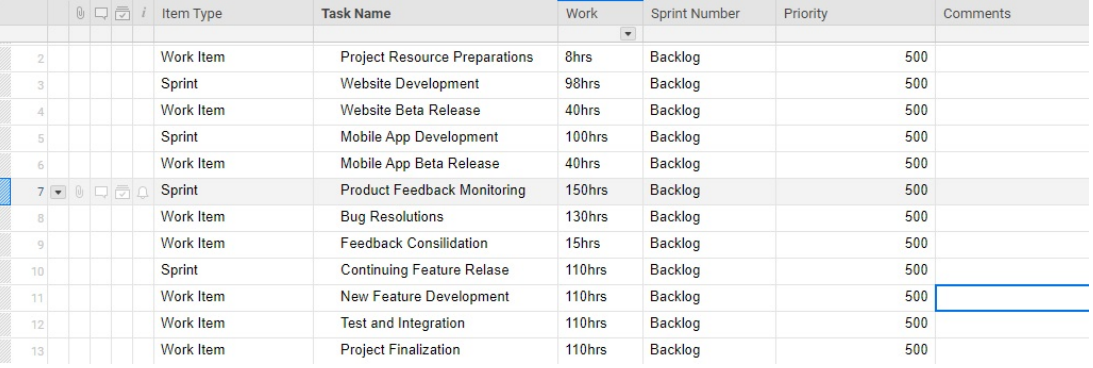Introduction
The planning step of an agile release is crucial in the process of marketing a company’s product. To ensure the long-term success of the firm, the plan provides a framework for the organization to work within. Stabilizing the market in terms of planning helps the institution contact its customers and maintain them as a consequence (Reynolds, 2020). This method includes reducing software hurdles, addressing some of them, and lastly, developing the software to fill the gap in e-commerce. With the help of e-commerce-specific examples of maintained stories and performance cards, agile release planning helps to flesh out the structure of the product itself. The research will also integrate risk maintenance stories based on the project’s content and performance cards based on the project’s performance metrics.
Product Road Map and Product Life Cycle


The road map and life cycle above plan for future expenses, effort, and professionalism in maintenance and improvement. The website will be out of date due to technological advancement, and customers will seek new features. In the project road map shown above, there are three phases that are involved, which entail growth and development phase, rise phase, and the fall phase. From the diagram above, it is evident that in month 1-12, it will involve the growth and development phase while month 19-29 involves the rise, progress, and fall phase. The subsequent colors show the corresponding months through which operations will be performed. The size of the color explains the magnitude of the corresponding operation to be performed by the multidisciplinary team. On the product life cycle diagram, an illustration of all the processes that will be performed has been explained schematically.
The first stage in this agile release planning is to grasp the product roadmap and product life cycle goals and objectives in detail. In addition to the conventional website, a mobile version of the e-commerce website must be established. The agile release planning approach for mobile devices begins with an understanding of the business objectives (Reynolds, 2020). Making sure everyone is on the same page and minimizing the chances of misunderstanding is critical to the success of the agile team and the delivery of high-quality products on schedule and under budget.
In terms of timeliness, it is critical that during the agile release planning process, the product goal be understood and revisited on a regular basis to ensure that the whole project is being developed and that significant features are being deployed inside the mobile application. If a team focuses more on the short-term objectives, they may run into the danger of encountering difficulties in aligning with long-term objectives.
E-commerce websites should allow customers to search for a product, locate a nearby store, and compare pricing with other retailers in their region, for example. This function would compare the costs of the two items on both websites and provide the same information. Goals for the future include increasing the number of retail locations within a given radius that carries the same product within 30 days of it being added to another location’s inventory. To avoid going backward or missing out on chances, the road plan must incorporate long-term objectives at the conclusion.
For this e-commerce website, related to the mobile application, an approximate of 90 days will be assumed to be the overall roadmap for the release. This entails a period of three months that is scheduled to start 10/03/22 through 10/06/22. This period will allow the website beta to be ready within the first month of the fourth month. On the other hand, the mobile version of the e-commerce website will be ready within the first day of the fifth month.
Often, the agile method relies heavily on collaboration amongst a variety of stakeholders, including the product owner, stakeholder, scrum master, and the development team. Product Owners, who often end users, have a unique perspective on the value of the product being produced and the resources required to see it through to completion. Ideally, there should be no more than a few mistakes, and catching them early on is always a goal.
Prioritizing particular features as most important will lead to a conclusion of the roadmap and product life cycle, which in turn will lead to the implementation phase for development. When developing a mobile application, it is necessary to take into account the possibility of a platform-specific issue (Reynolds, 2020). Mobile app security risks, inappropriate platform selection, and miscommunications may all contribute to incorrect mobile app development, among other things.
Iterations and Tasks
The release plans for a mobile-friendly version of the e-commerce website have been added to this project’s timetable. On the basis of the above-mentioned modified life cycle and plan, the team crafted this timeline. In software development, an iteration is a new step forward or backward in the process (Kim & LaRose, 2019). Every day for the next few weeks, there will be a short meeting. Whether in beta or alpha, features will be tested at the conclusion of each week. The time and money needed to complete the e-commerce site’s mobile version will almost certainly increase as a result of this addition (Reynolds, 2020). Due to the increasing workload, more precise predictions of time and cost are predicted. The team will compile user input during the feedback process. Bug reports and consumer ideas are just a few examples of the kinds of things you might say in this type of feedback. Adding more features is expected as the team nears the finish of the project, based on the input they have received.

In the iteration phase, the main activities that will be carried out entail website beta release, mobile app beta release, product feedback monitoring and the continuing feature releases. The accompanying diagrams demonstrate the growth of the home improvement store’s website to fill the void created by mobile phones and tablets and their associated tasks and iterations. It shows the product’s existing and future usage and wears expectations.

The project’s tasks necessitate the involvement of a multidisciplinary team, including experts in IT, marketing, software engineering, project management, and web design. Therefore, from the table above, the main tasks that will be carried out by the multidisciplinary team will entail website development, project resource preparations, website beta release, mobile app development,bug resolutions and feedback consolidations. Other tasks that will be carried out in the creation of the mobile website include testing and integration and project finalization.
Associated Risks
The Risks
To begin with, agile mobile e-commerce software development is fraught with dangers. The project might run into problems because of its complexity. A user-friendly program will not fulfill the demands of all customers; some may take longer to adapt than others. The application’s graphical user interface may be a problem for some clients (GUI) (Reynolds, 2020). As a result, some users may find it difficult to use the software’s overall user interface in this case. When logging in and making transactions, as well as when creating an account and encrypting it, they may have difficulties.
Software adaptability may also be a problem for this project. According to de Lima Fontao et al. (2018), mobile phone software is the most rapidly growing technology in the world. It seems like every day, a new operating system software upgrade comes out from a different developer. Every three months, at the very least, companies release new versions of their products (Flora, 2018). Applications that run on mobile devices must change their policies to reflect the new operating system, and this has an effect on their performance.
Finally, mobile application software has security risks. It is possible for the system to be damaged in several ways. One way to get around this issue is to re-create the app. Duplication is a common fraud technique used in today’s cyber security crimes. While many developers come up with an almost same name for their mobile app, they are not the ones that came up with it first. With this method, fraud activities with the customer may be carried out more easily. In some cases, the client may be dissatisfied with the security system. When a client’s close friend or family member acquires access to their login credentials, this happens regularly. The individual who gains access to this data has the potential to commit additional, highly sensitive acts of fraud using the client’s personal information. While the client is responsible for disclosing their login credentials, they may begin to doubt and place blame on the application’s security system. It might have an impact on the company’s reputation.
Strategies to Mitigate the Risks
There are several ways to overcome these obstacles, notwithstanding the challenges. As a starting point, one of the most effective ways to address usability concerns is to engage a research team. Usability testing is the process of conducting interviews with frequent mobile app users in order to discover how well the product can operate. Each of the agile project’s three designs will be based on the same material, but they will be different (Kim & LaRose, 2019). An objective and impartial sample of customers will be polled on the product’s efficiency as part of the usability study. Based on the projects’ evaluations, it would be simple to choose the best agile application. This method will assist in the discussion of the firm’s most fundamental interphase.
It is possible that the usability research was not entirely successful. Because of this, it is preferable to design a backup strategy in order to bridge the complexity gap in the application. It is also possible to reduce complexity by implementing live assistance. One of the most recent website additions is live assistance. The live help option is a system that works in such a manner as to make it easy for the client or user to get help. Choosing a real person to assist you is also a smart move. Every page of your mobile app will include a live assistance option, in this situation. Clients’ wait times for answers to their questions will be cut in half thanks to the addition of live assist support.
Furthermore, ensuring consistent login security would be a suitable approach in the security system. Implementing OTP technology is the first step towards achieving this goal (Shivraj et al. 2019). Using the OTP method, the client is given the choice of approving or disapproving the login process before it begins. In this scenario, the system is more secure since the client is in charge of all login authorizations. Allowing customers to alter and recover their passwords at any time would also be advantageous. Final but not least, the software system’s flexibility, unpredictability, and dynamism need that it be kept up to speed with current trends and market systems. System monitoring is essential in this situation. The project will be overseen by a system manager with experience in corporate information technology. To meet the demands of business, the staff will help make necessary system improvements.
Maintenance Stories
The utilization of a heart-to-heart link is another illustration of maintenance story. There are few things more appealing than making customers feel valued (Flora, 2018). Customers can be persuaded that their presence is significant with the use of this method. System administrators choose a person to engage with customers about their products and other concerns (Pascoe, Wright, & Winzar, 2017). Customers are more likely to return because of this strategy.
The second example of maintenance in the agile framework is showing it off nicely. Adapting to a new technological system may take some time for the public. Customers often forget that the website even existed because of this difficulty (Frora, 2018). This situation necessitates the use of a series of advertising to promote the site. Keeping the link on social media and other internet congested websites would be part of this strategy. People will become familiar with the new system as a result of this method, making it more accessible.
Performance Cards
The company’s e-commerce strategy will result in a slew of performance cards. The first example of the performance card as a consequence of a well-thought-out strategy is the increase in earnings. If the website is well maintained, the number of clients will rise. This increase can be ascribed to word-of-mouth, new entrants into the market, and return customers. A rise in profit margins is therefore assured as they are able to purchase and transact more with the business.
Another example of a performance card is tied to the company’s expansion. The company’s growth may be influenced in a number of ways if proper preparation is made (de Lima Fontao et al.2019). For starters, it would boost the company’s visibility. Demand for the company’s products will rise as a result of the company’s success (Pascoe, Wright, & Winzar, 2017). As a result of the company’s growing popularity, it will be able to secure more important resources, such as loans or investor capital. If they are successful in raising a large sum of money, they will have several possibilities for expanding their business.
Conclusion
In summary, it has been revealed that the success of this project depends on the strategy used to meet both short-term and long-term client’s requirements. Some of the short terms goals that have been discussed entail selection of mobile environment and mobile content filtering. In a review, the long term goals discussed include remedies for the risks and integration of the project with social media sites. This strategy may be used in a wide range of situations, as seen in the paper. Usability and adaptability are its primary concerns. This includes making the program user-friendly and reducing the amount of data and complexity in the system. As a consequence, the company’s operations would be more stable if it replicated this method and attracted more clients.
References
de Lima Fontao, A., dos Santos, R. P., & Dias-Neto, A. C. (2018). Mobile software ecosystem (mseco): a systematic mapping study. In 2018 IEEE 39th Annual Computer Software and Applications Conference 49(2), 653-658.
Flora, H. K. (2018). Adopting an agile approach for the development of mobile applications. Communications of the ACM, 45(7), 103–108.
Kim, J., & LaRose, R. (2019). Interactive e-commerce: promoting consumer efficiency or impulsivity? Journal of Computer-Mediated Communication, 10(1), 106-235.
Pascoe, M., Wright, O., & Winzar, H. (2017). Using best-worst scaling to reveal perceived relative importance of website attributes. Asia Pacific Journal of Marketing and Logistics, 45(7), 103–108.
Reynolds, J. (2020). The complete e-commerce book: design, build & maintain a successful web-based Business. CRC Press.
Shivraj, V. L., Rajan, M. A., Singh, M., & Balamuralidhar, P. (2019). One time password authentication scheme based on elliptic curves for Internet of Things (IoT). In 2015 5th National Symposium on Information Technology: Towards New Smart World (NSITNSW), 46(8), 1-6.